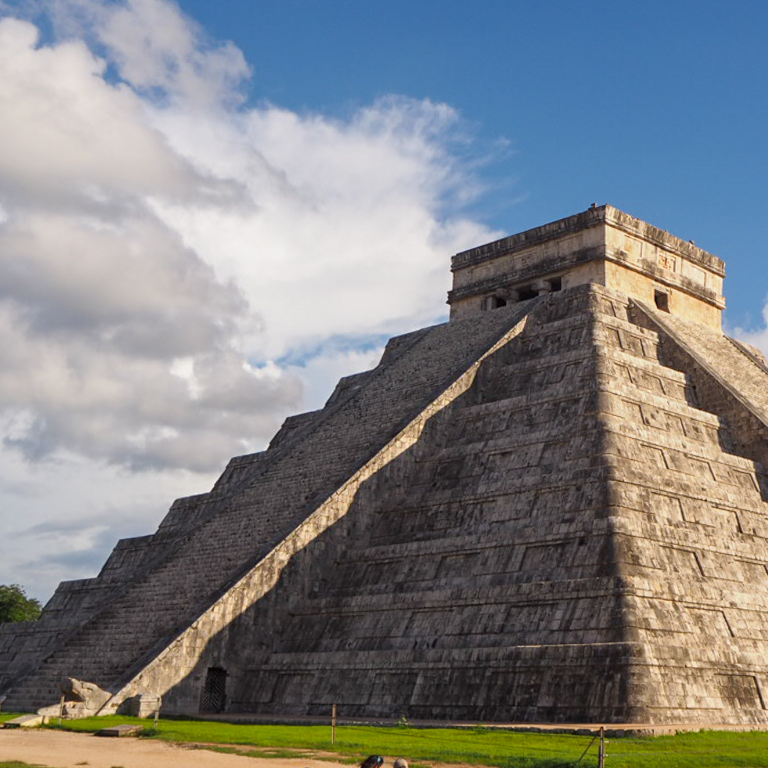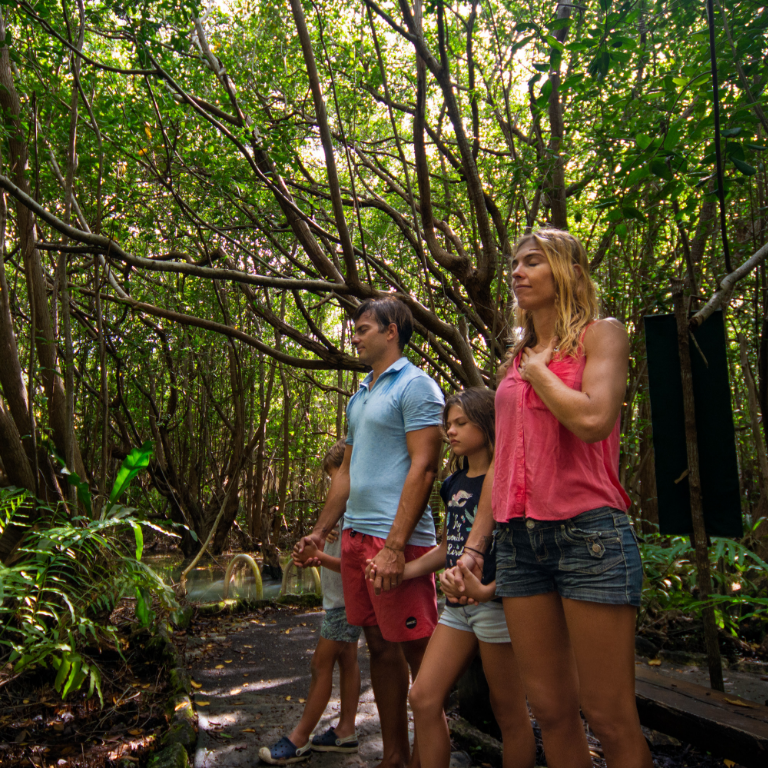
An equinox is the moment when day and night last the same amount of time because the light is projected equally in both hemispheres: north and south. The spring equinox in the northern hemisphere occurs around March 21st each year and from this moment on the length of the day begins to lengthen.
In the Mayan area, the spring equinox takes us to Chichén Itzá, one of the 7 wonders of the modern world, an example of a highly advanced civilization in mathematics, architecture, astronomy and much more. Here is “El Castillo” or the Pyramid of Kukulcan where, during the equinox, the phenomenon of light and shadow that many of us hope to see occurs. When the sun sets, a play of light and shadow can be seen on the northern staircase of the pyramid, simulating the descent of Kukulcan, the Feathered Serpent; The god has thus arrived on earth to bring spring and the agricultural cycle begins.
El Castillo is a pyramid with a base of 180 ft. on each side and 98 ft. high and is in itself a giant calendar that marks the changes of season and the passing of days. It was also recently discovered that it is built on a cenote. It is located in Chichén Itzá, a majestic archaeological zone 117 miles west from Cancún, where you can also explore the Observatory, the Ball Game and the Temple of the Thousand Columns among many extraordinary works that show the interaction of Mayan ingenuity with nature and their vision of the universe.
Experience the magic of spring on the day of the equinox and discover another reason to admire this ancient culture.
Recommendations:
- The equinox spectacle does not only occur on March 21st. If you go to the site within two days before or two days after, you will find less concentration of visitors. Remember that the phenomenon occurs at sunset.
- Wear comfortable shoes, light clothing, sunscreen, a hat, insect repellent and water.
- To preserve the site, climbing the pyramid structures or extracting stones is not permitted.






